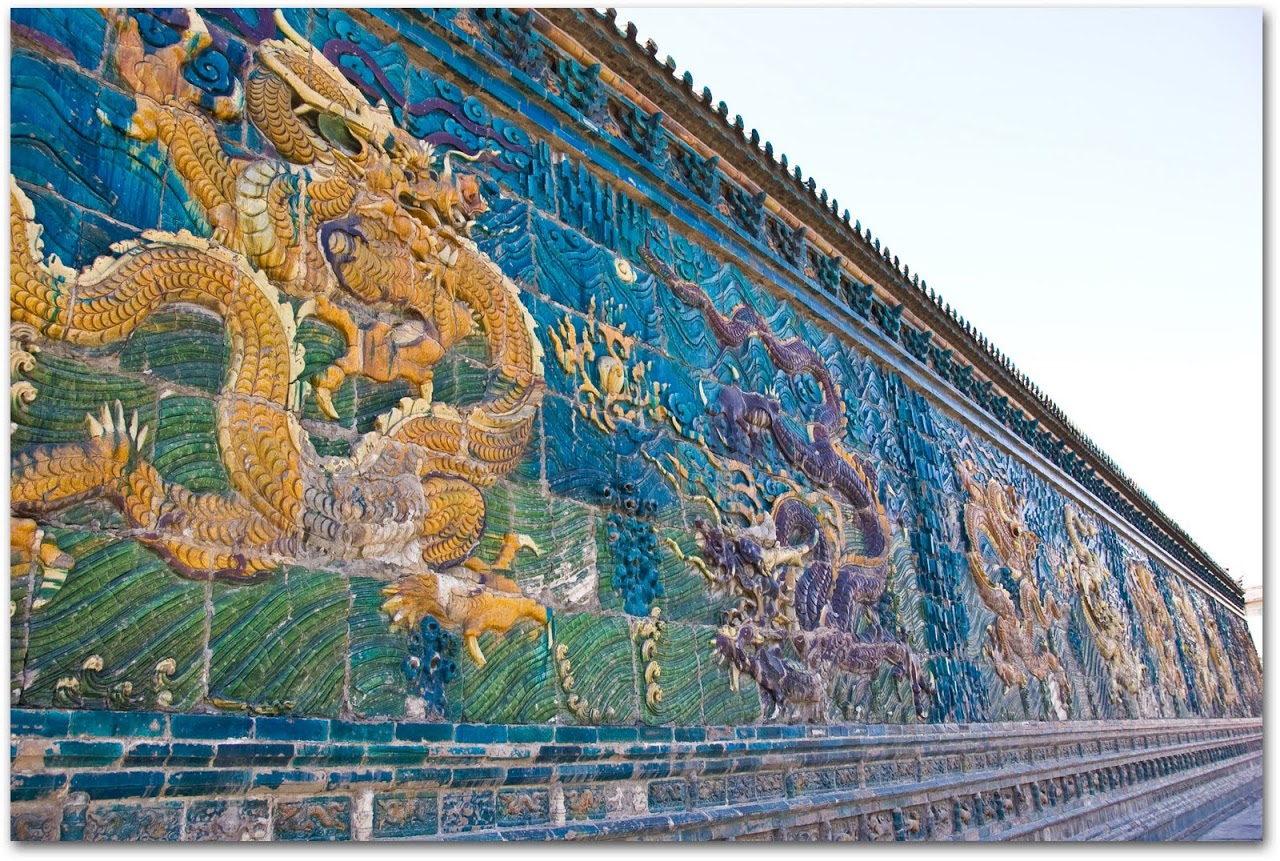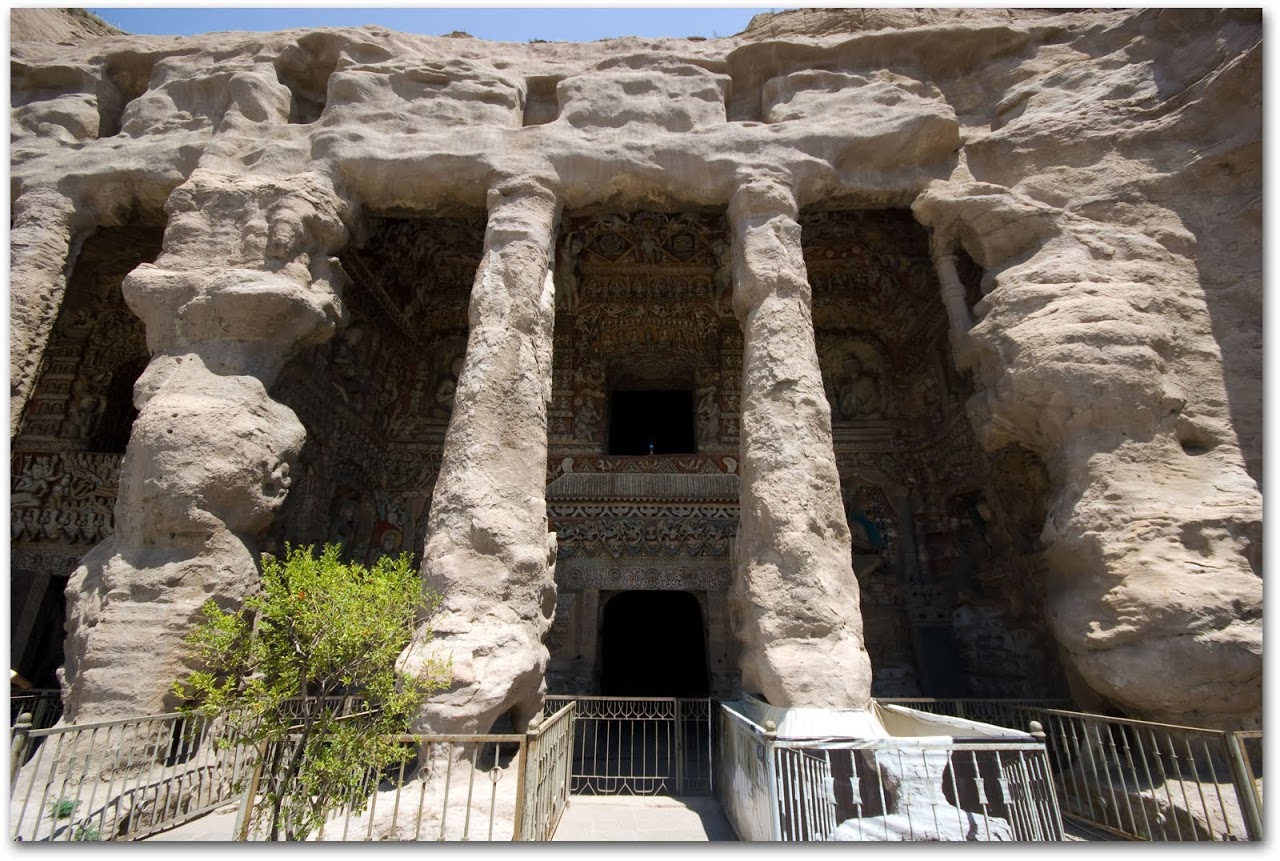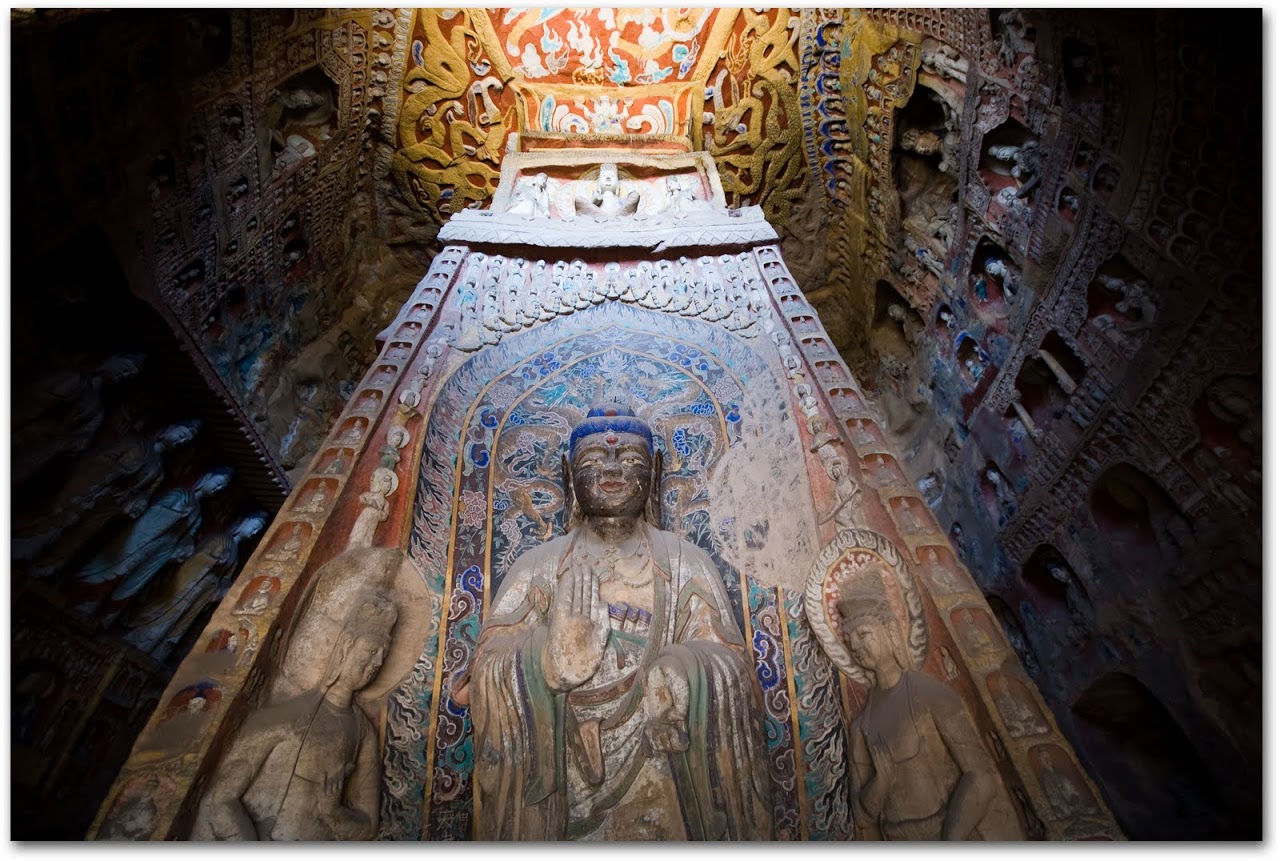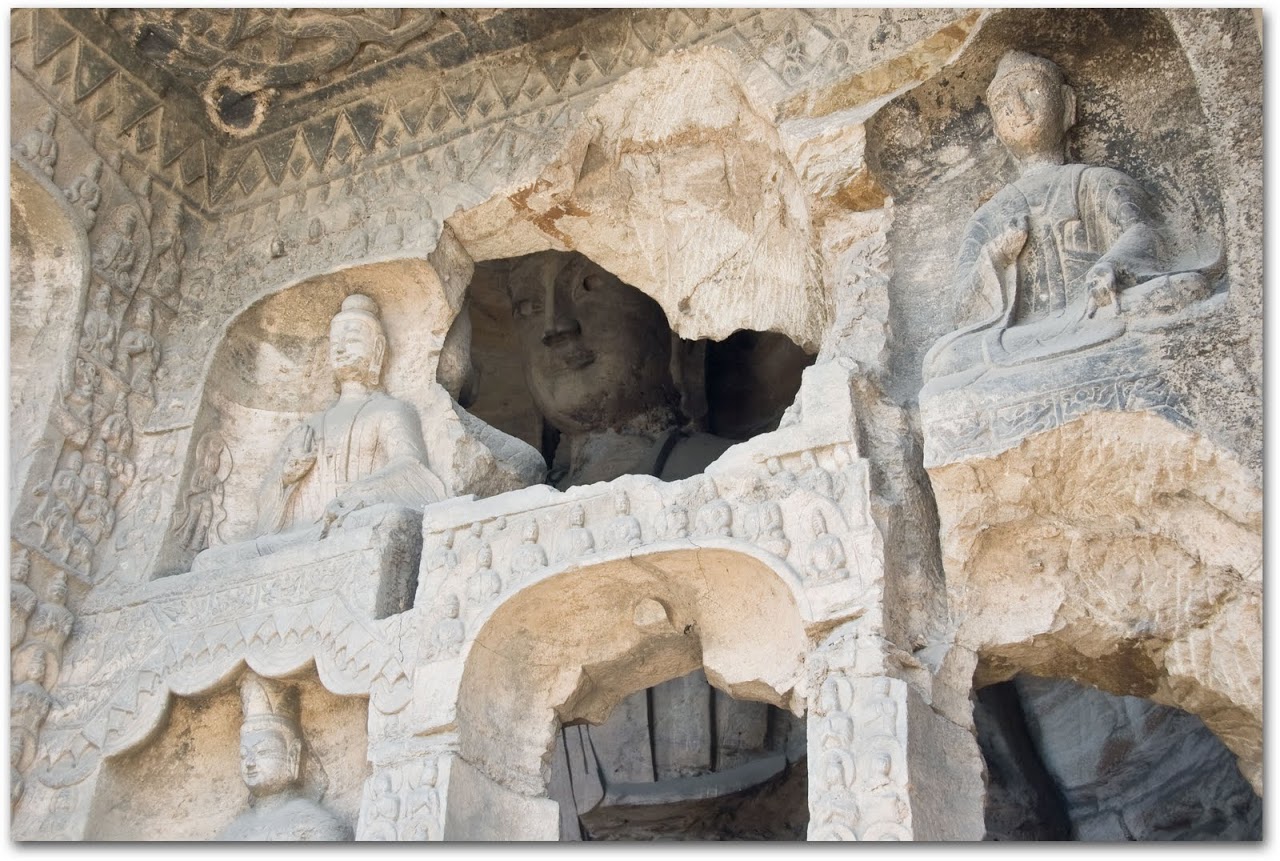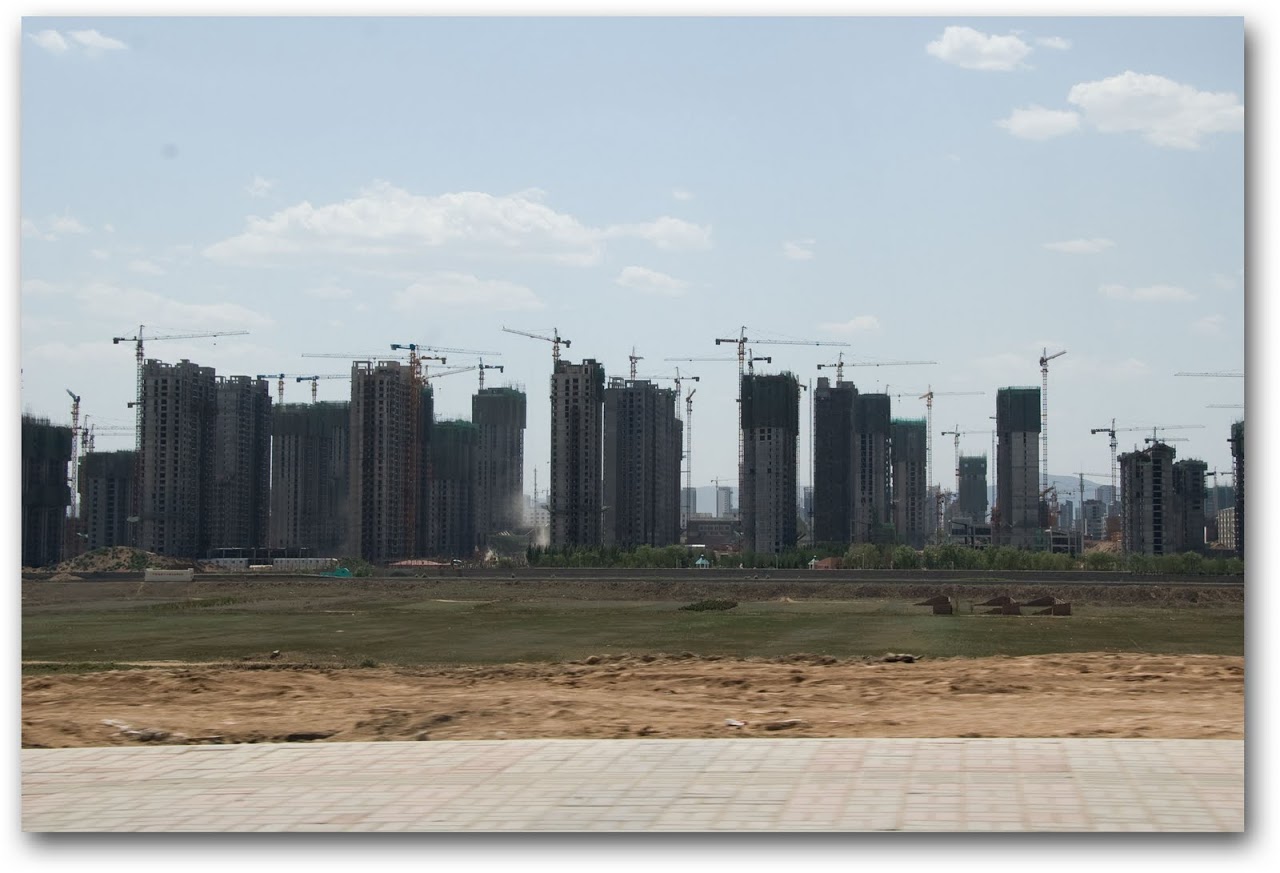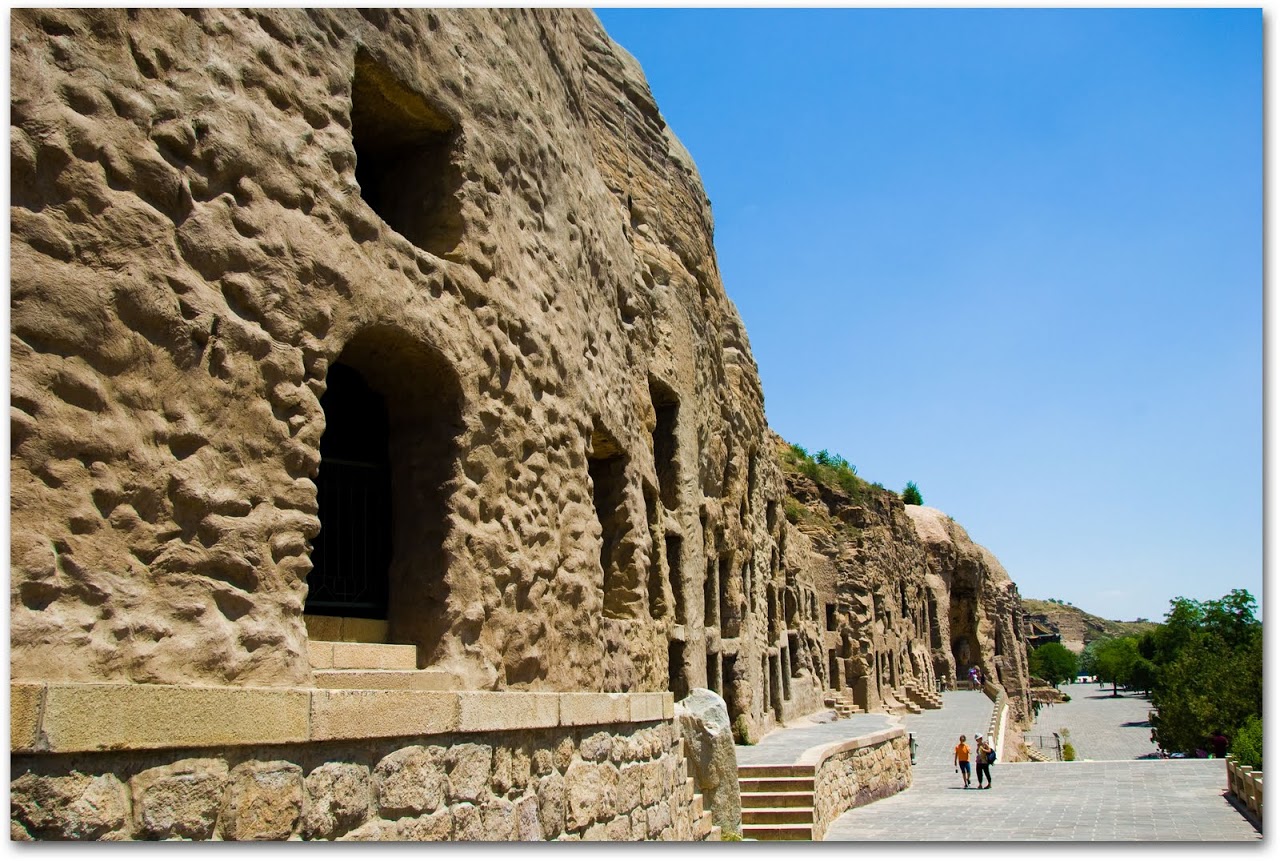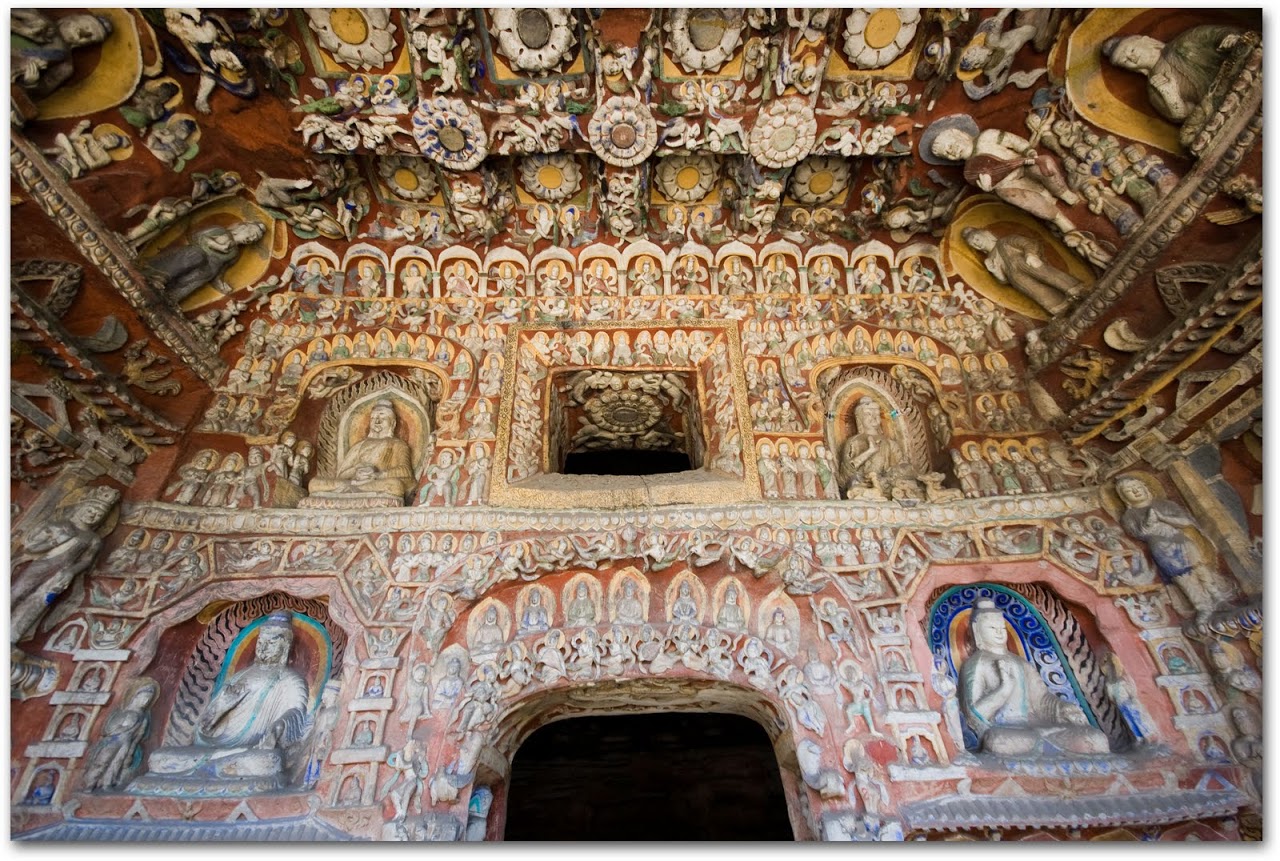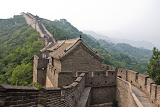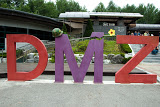Nine dragon screen, Datong
Progress is a good thing, we say. There are people all over the world---radio hosts, syndicated television shows, and lifestyle design bloggers---telling us that we need to alter our lives, move forward, and proceed into a new age of living. And, then, after some time of transforming ourselves, our lives, and our attitudes, progress becomes an insatiable hunger, a burn for change that overwhelms people and overtakes nations.
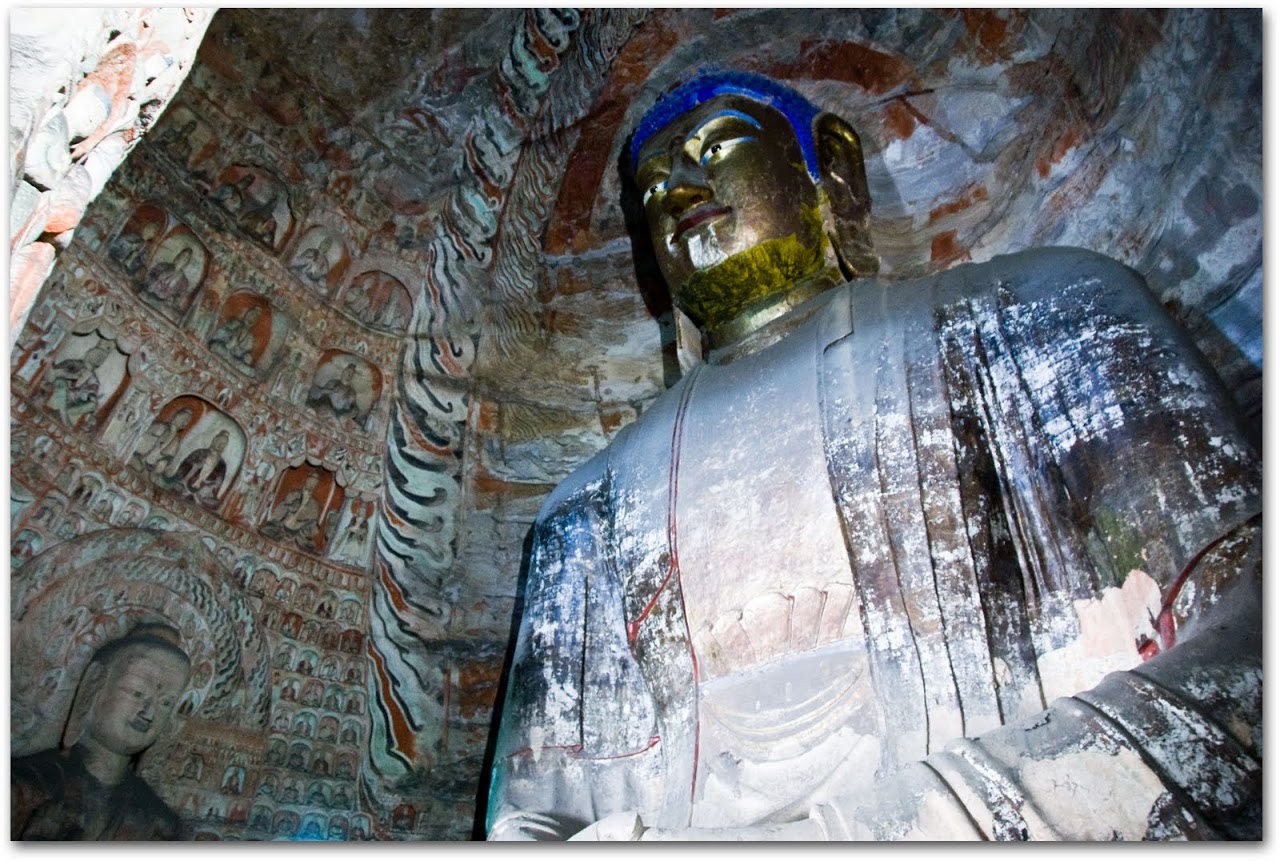
|
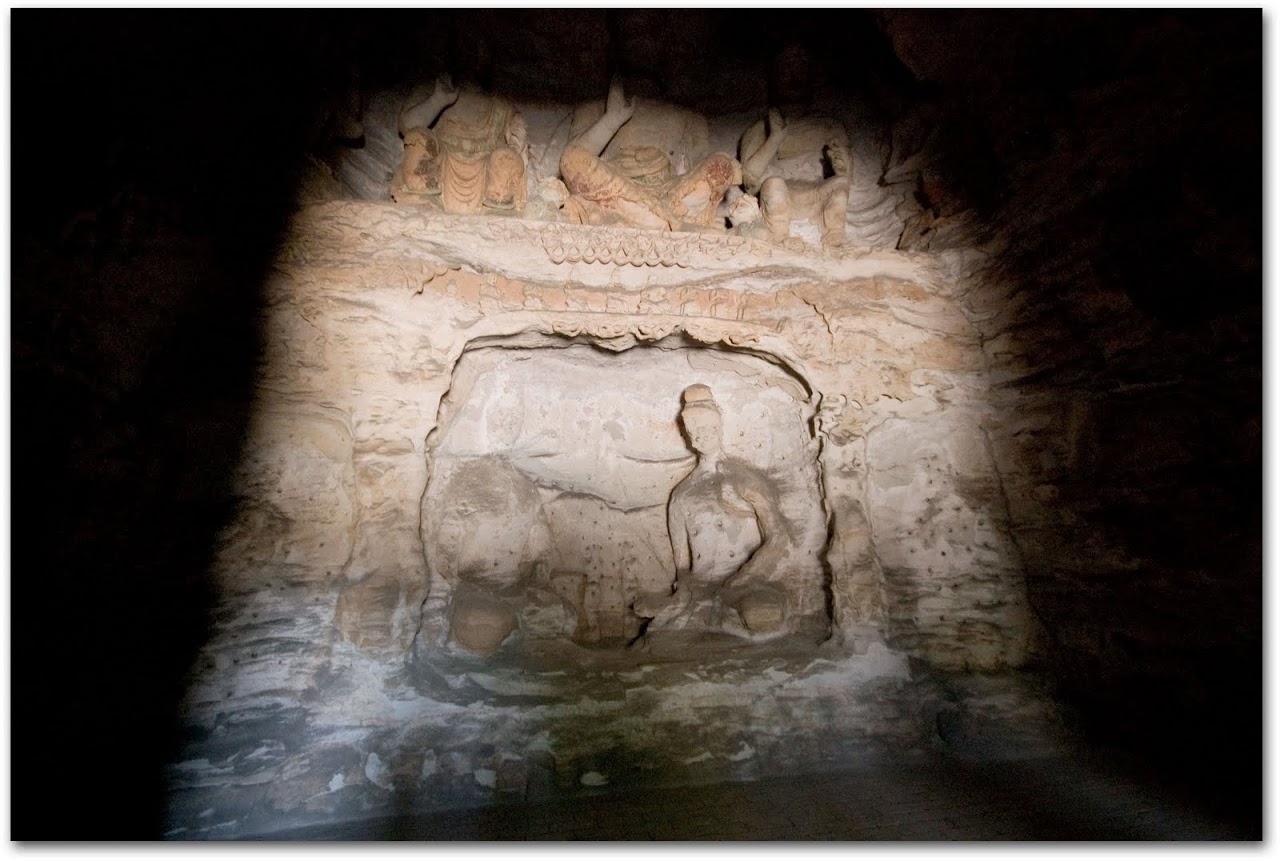
|
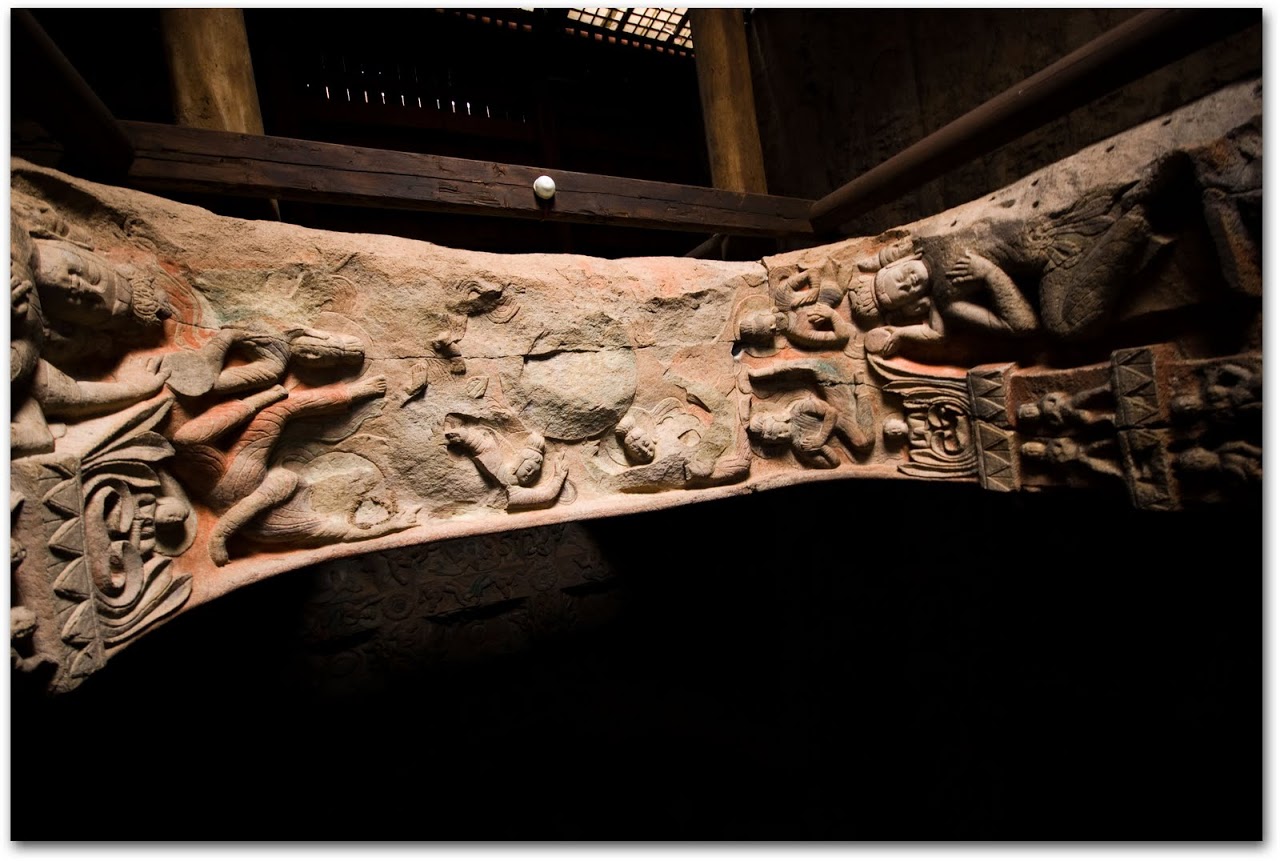
|
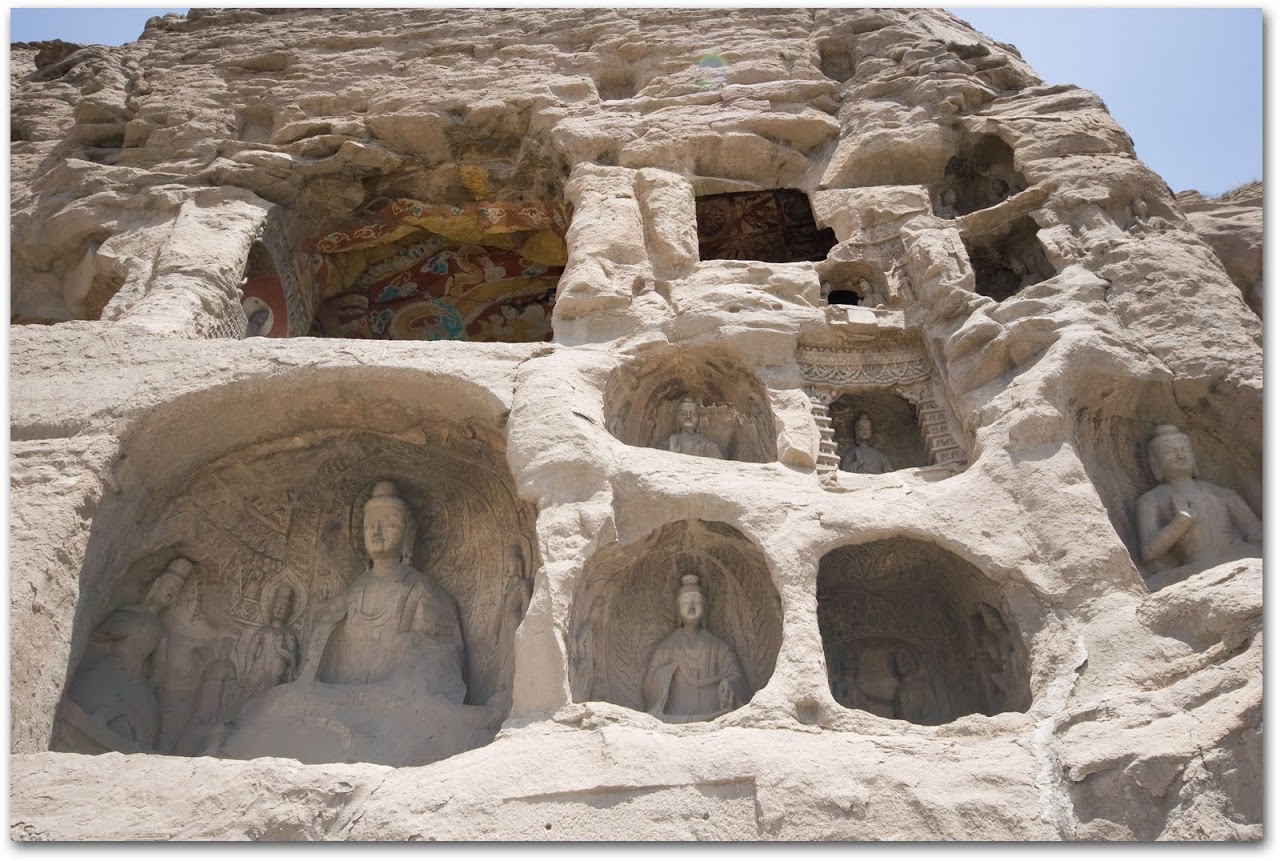
|
Yungang Grottoes
Progress has consumed China. For centuries, empires rose and fell, creating instability and uncertainty amongst the populace. Traditions, clothing, language, and culture were replaced every few centuries, resulting in a melding of differences that still occupies the nation.
Exterior of one cave
During Mao's ascendancy, the Cultural Revolution destroyed thousands of ancient artifacts, temples, and structures. And, now, there is a new type of revolution, one focused on providing accessible wealth to the masses.
Yungang Grottoes
The Beijing hutongs , the narrow alleyways where people traditionally lived in humble one-room brick houses without electricity or water, are being ripped down. Steel and concrete high rises with air conditioning, heating, running water, and cable television are taking their place.
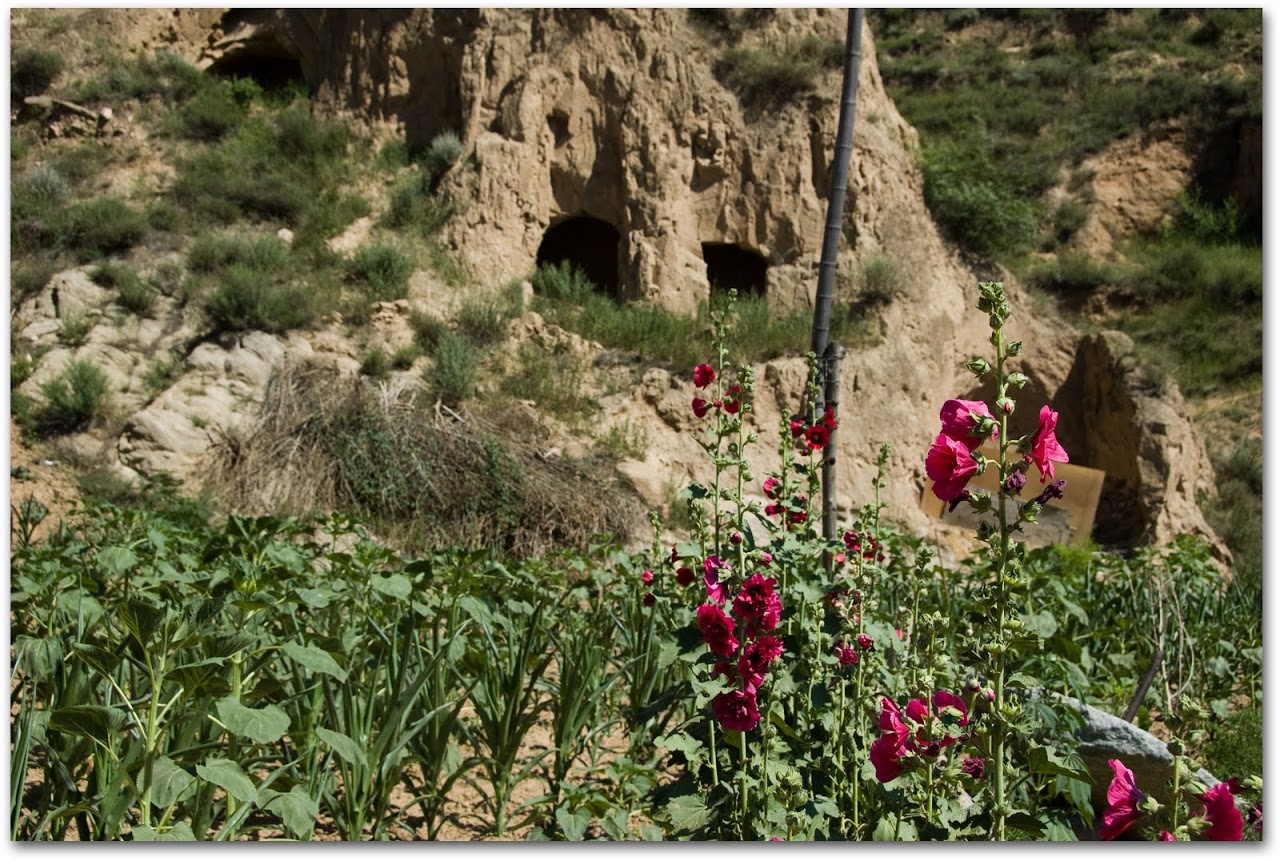
|
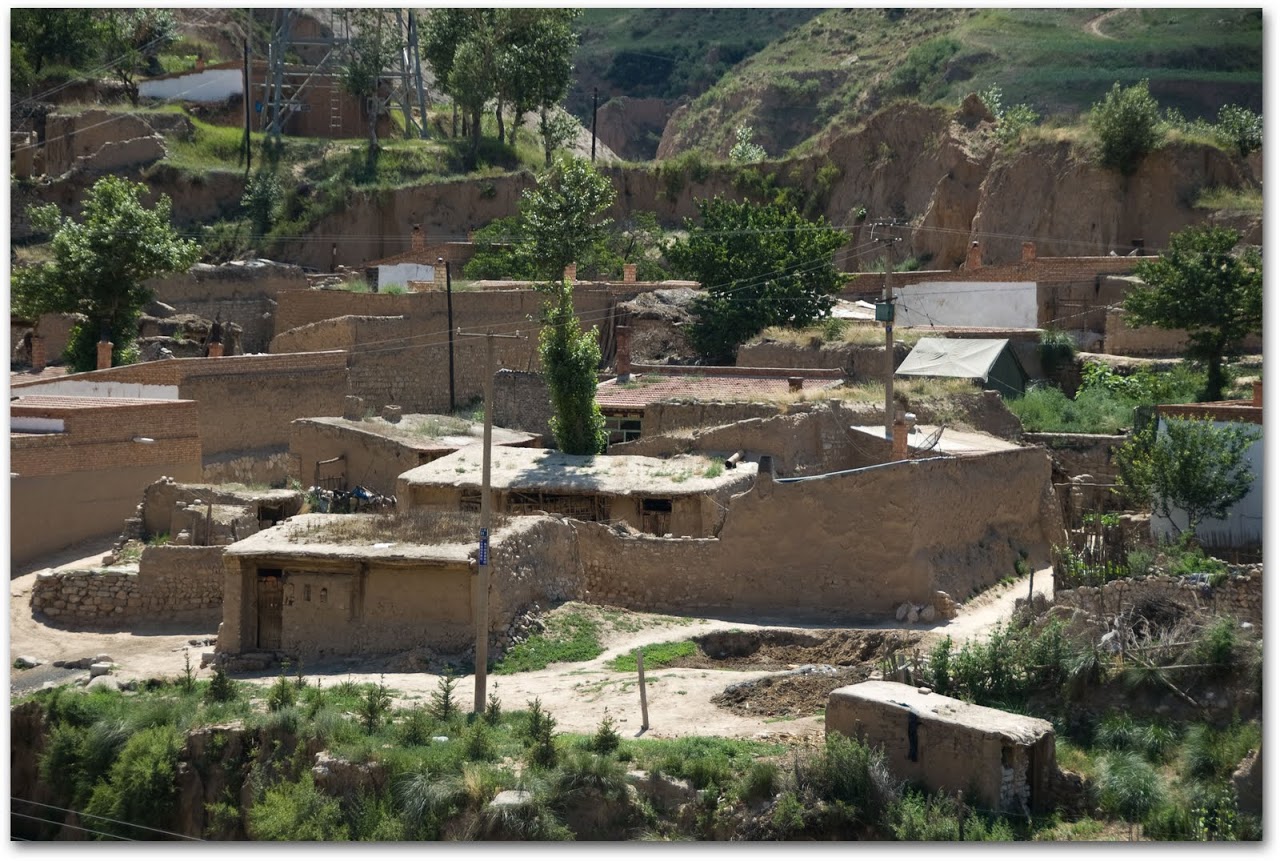
|
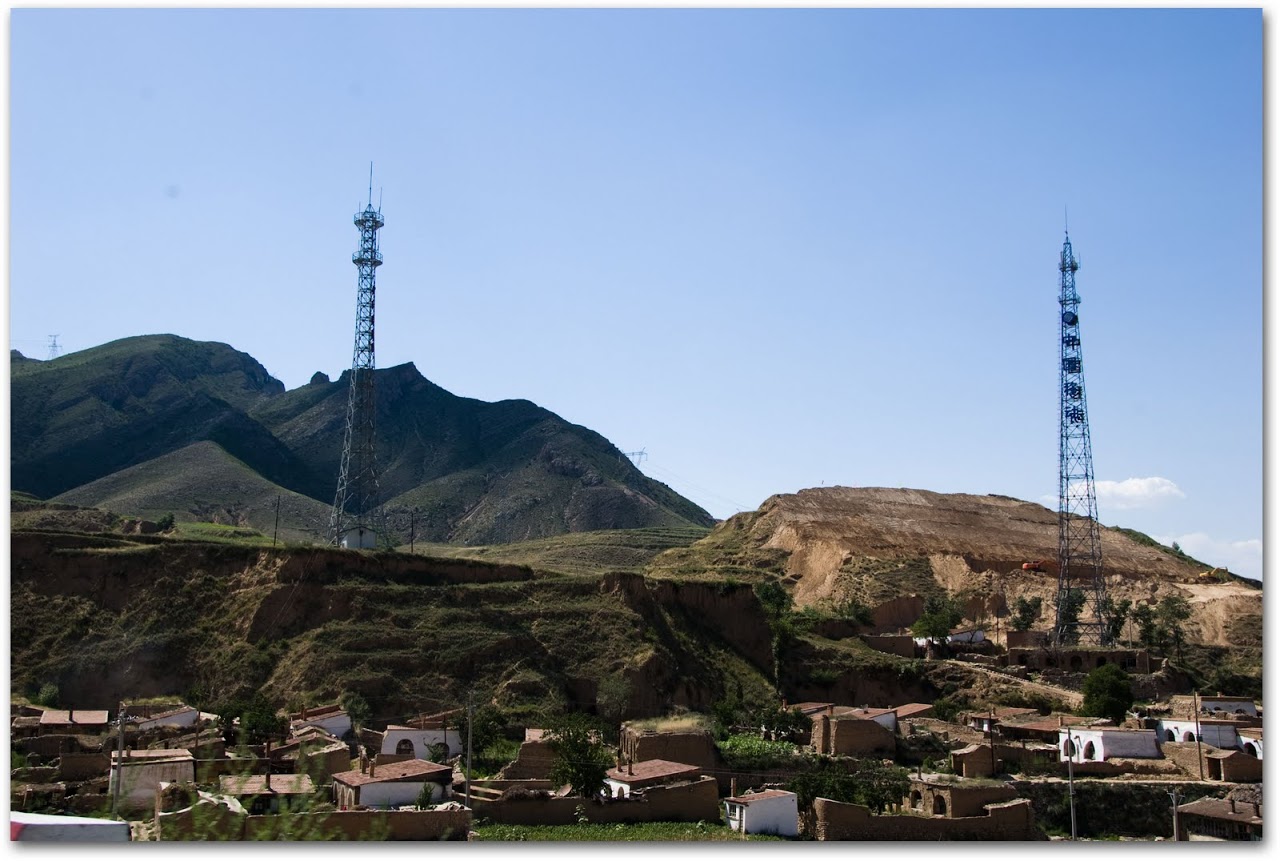
|
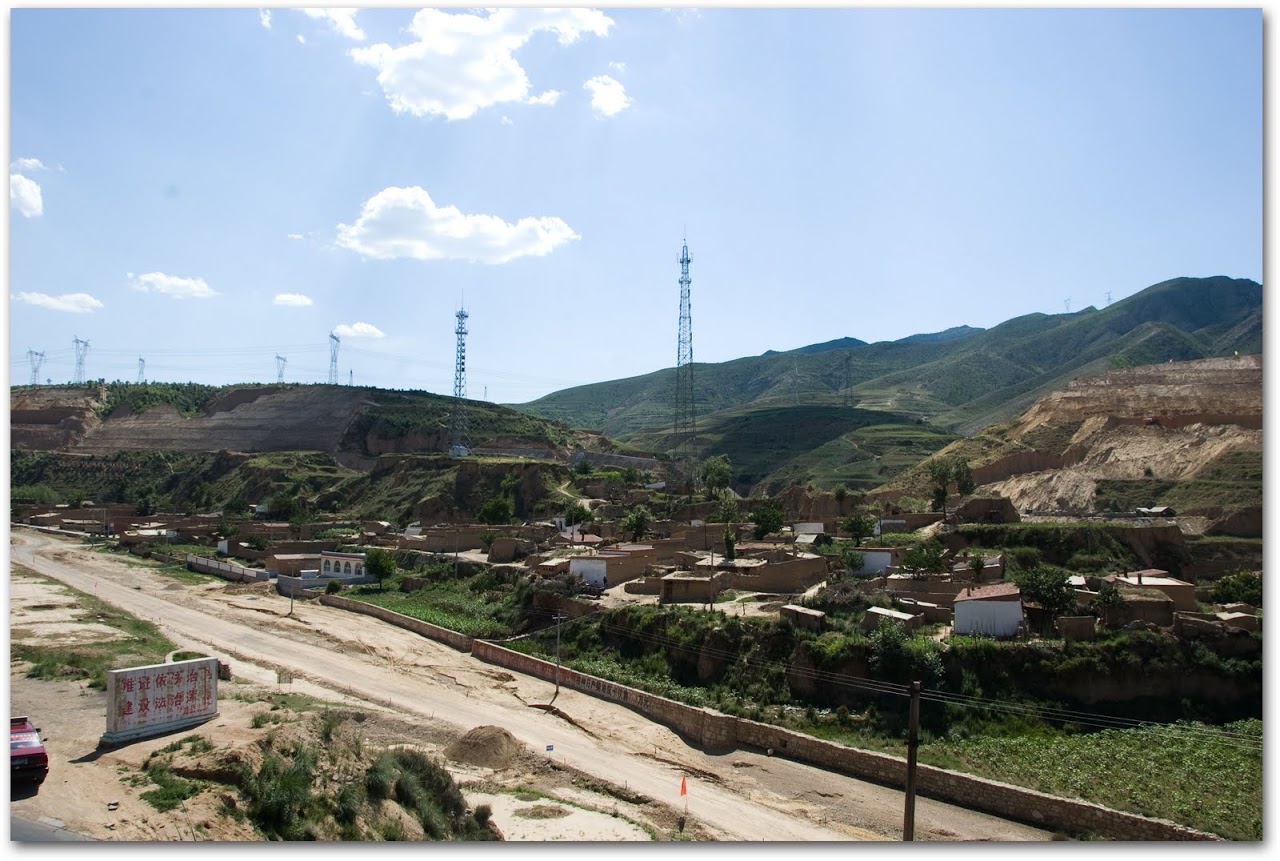
|
In Datong, a city of black-gray buildings covered in grimy soot from the surrounding coal mines, the road to the Yungang Grottoes, the famous Buddhist cave temples carved and painted 1500 years ago, is being demolished and repaved. The tiny villages of sunken houses in the desert landscape have been thrown apart by dynamite and the gigantic coal mine within viewing distance of the stunning Grottoes is being enlarged as China becomes a world leader in coal production.
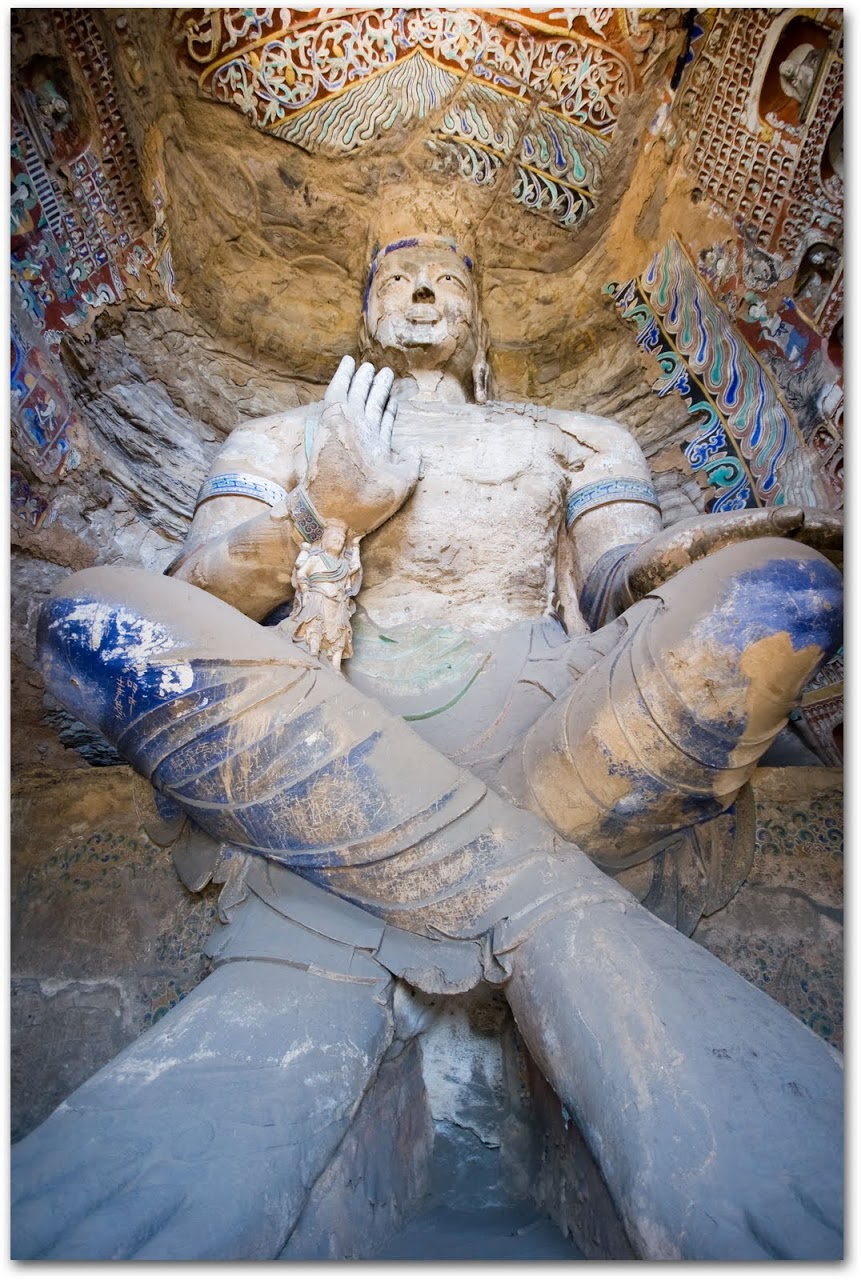
|
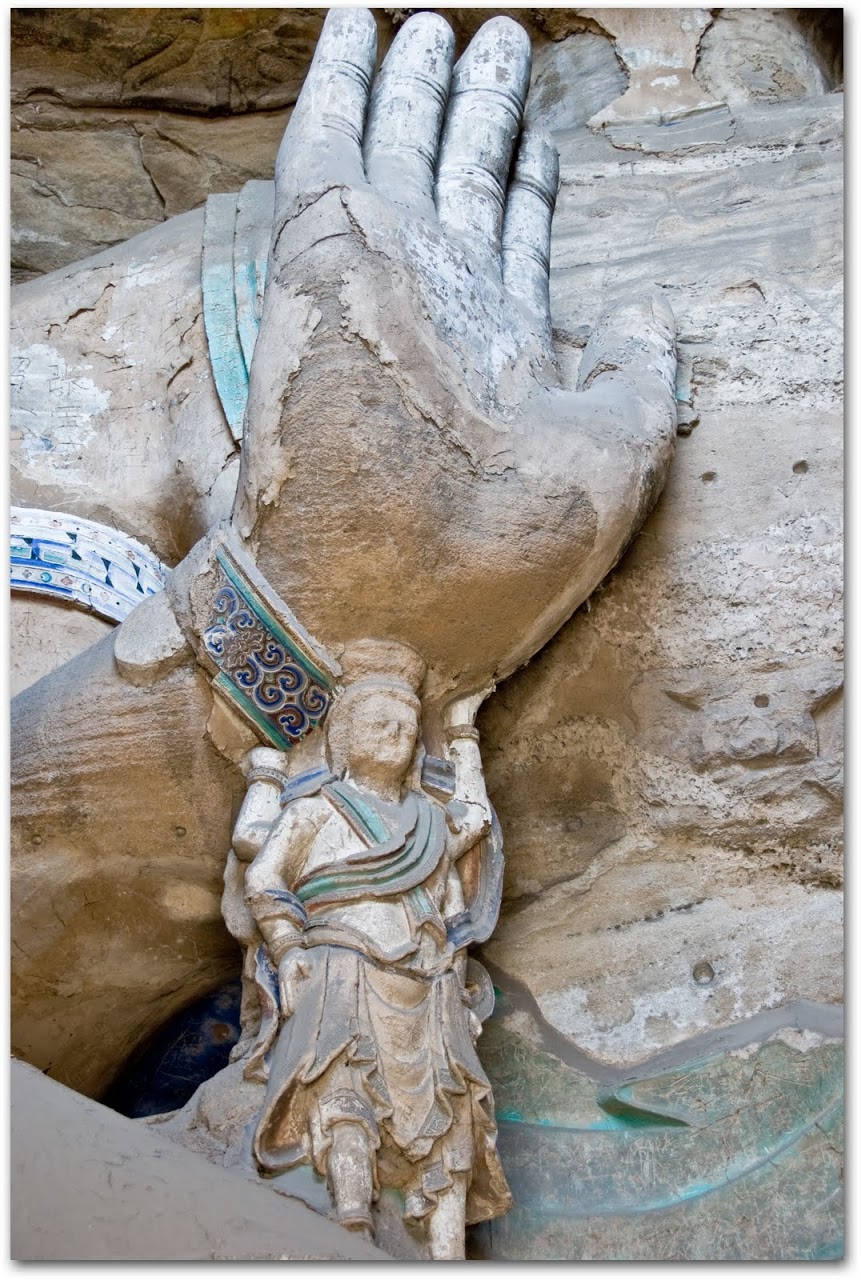
|
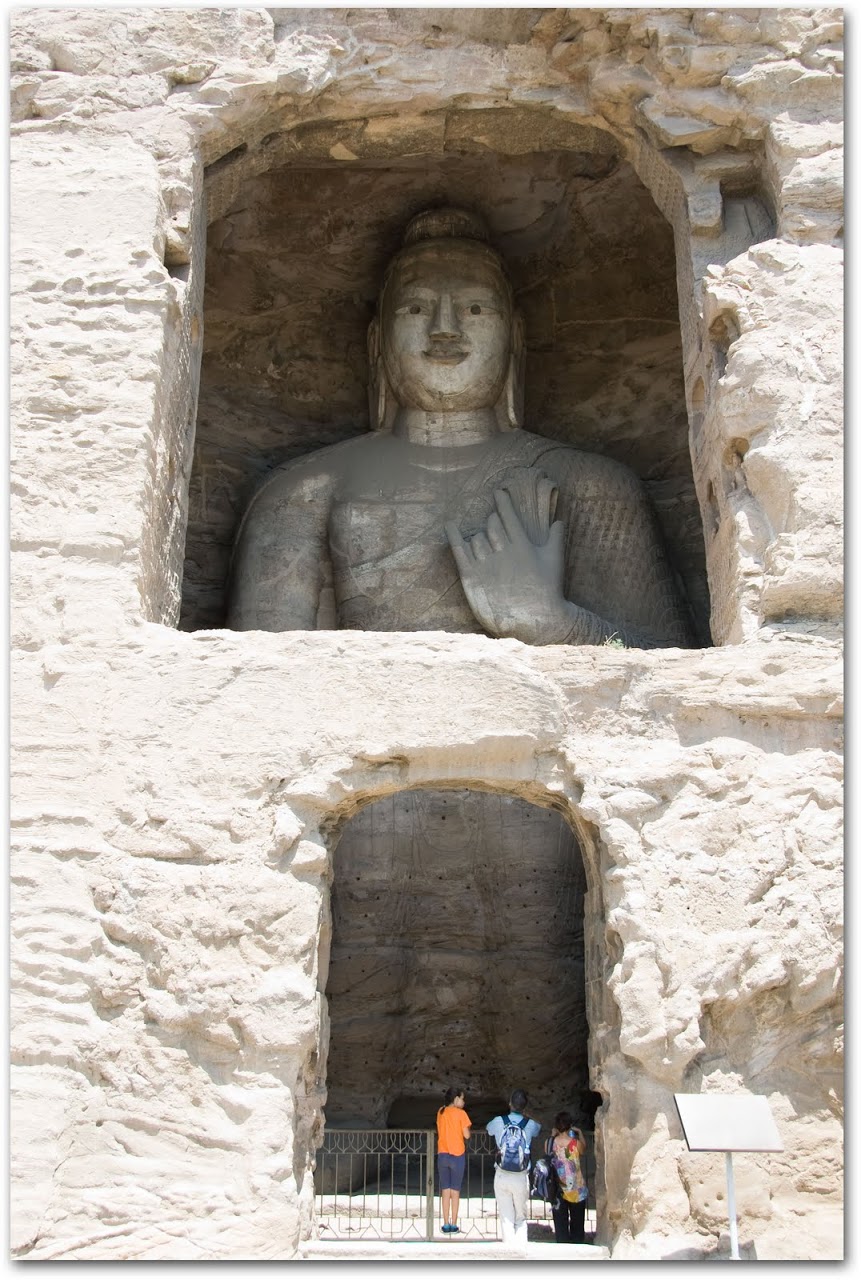
|
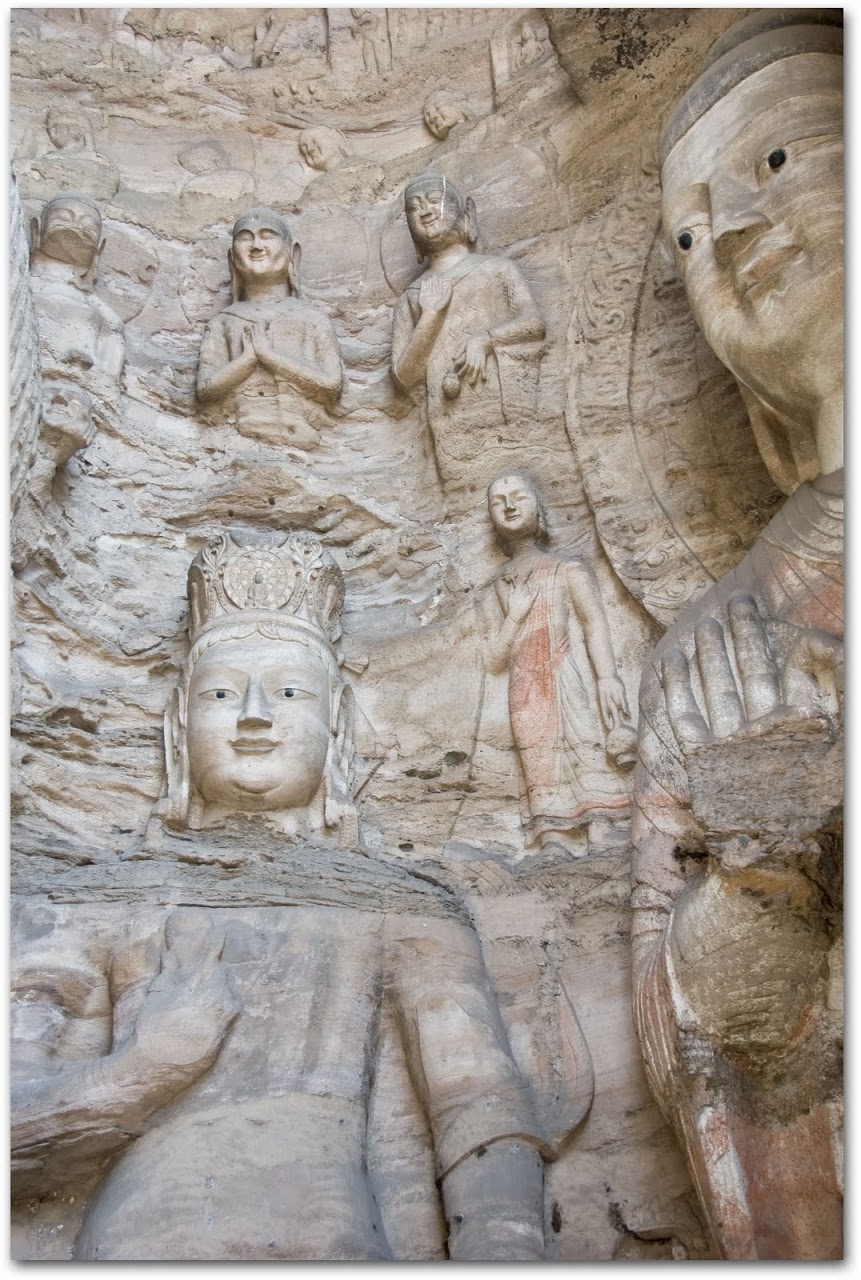
|
The Grottoes, themselves, are symbols of change. The cave temples were built and painted in 400 and 500 A.D., then a second construction phase occurred in 1000 A.D., but those additions burned a mere 60 years later. Wooden temple exteriors were added in 1621 to two of the caves.
Exterior of partially destroyed cave, showing interior Buddha
The caves were spared during the Cultural Revolution though some of the Buddhas were beheaded at that time. Yet, in those 1500 turbulent years, the stone statues have lingered on, mostly unchanged, their serene eyes looking through the cracks and crevices of the stone caves, watching the visitors enter each temple to gawk, pray, or desecrate.
Cranes for construction of high rises in Datong
As for me, I am confused by the progress. Is it good? Yes, of course. We want people to eat well and afford a comfortable lifestyle in houses fit with electricity and running water. Good roads, faster transit, and better telecommunication are all good things.
All of the Grottoes
But, is progress in this country bad? Again, yes. It bothers us that the beautiful traditional homes are being destroyed, ripping apart pieces of China's historical memory and displacing traditional families. It seems wrong that the smoke and refuse from coal mining should harm the paint and stone of the wise old Buddhas that have lived in the Grottoes for so long.
My favorite of the Grottoes
I don't know how a country of 1.3 billion people should balance these contrasting wants and needs. I know this, though. Tomorrow, China will be a different place, shaped by a hunger for progress that has transformed the country from an imperial dominator to a third-world nation to a burgeoning first world-power in less than a century.
Out of Office Auto Reply : We are currently trolling about the crocodile and hippo infested waters of Botswana in a dugout canoe, hoping that our camera doesn't get wet or eaten while camping. We won't be able to monitor or respond to comments for the next few weeks because, unsurprisingly, the hippos don't use Internet all that much. Play nicely, please!








